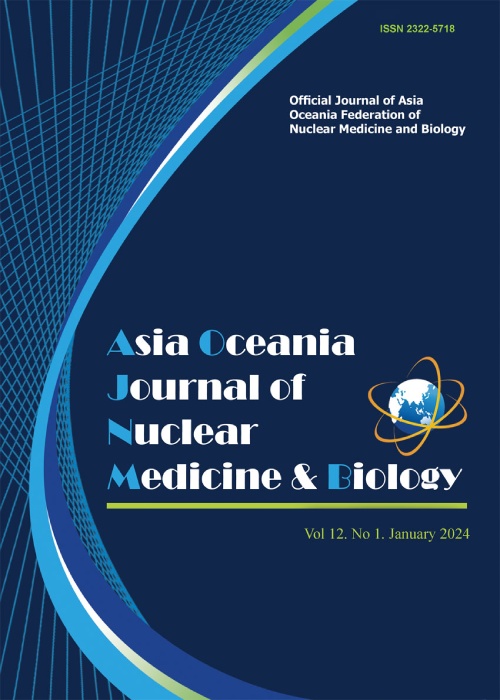Imaging of accidental contamination with F-18-solution; a quick trouble-shooting procedure
Author(s):
Kalevi Kairemo , Aki Kangasm , Auml , Ki
Abstract:
To the best of our knowledge, imaging of accidental exposure to radioactive fluorine-18 (F-18) due to liquid spill has not been described earlier in the scientific literature. The short half-life of F-18 (t½=110 min), current radiation safety requirements, and Good Manufacturing Practice (GMP) regulations on radiopharmaceuticals have restrained the occurrence of these incidents. The possibility of investigating this type of incidents by gamma and positron imaging is also quite limited. Additionally, a quick and precise analysis of radiochemical contamination is cumbersome and sometimes challenging if the spills of radioactive materials are low in activity. Herein, we report a case of accidental F-18 contamination in a service person during a routine cyclotron maintenance procedure. During target replacement, liquid F-18 was spilled on the person responsible for the maintenance. The activities of spills were immediately measured using contamination detectors, and the photon spectrum of contaminated clothes was assessed through gamma spectroscopy. Despite protective clothing, some skin areas were contaminated, which were then thoroughly washed. Later on, these areas were imaged, using positron emission tomography (PET), and a gamma camera (including spectroscopy). Two contaminated skin areas were located on the hand (9.7 and 14.7 cm2, respectively), which showed very low activities (19.0 and 22.8 kBq respectively at the time of incident). Based on the photon spectra, F-18 was confirmed as the main present radionuclide. PET imaging demonstrated the shape of these contaminated hot spots. However, the measured activities were very low due to the use of protective clothing. With prompt action and use of proper equipments at the time of incident, minimal radionuclide activities and their locations could be thoroughly analyzed. The cumulative skin doses of the contaminated regions were calculated at 1.52 and 2.00 mSv, respectively. In the follow-up, no skin changes were observed in the contaminated areas.
Keywords:
Language:
English
Published:
Asia Oceania Journal of Nuclear Medicine & Biology, Volume:4 Issue: 1, Winter 2016
Pages:
51 to 54
magiran.com/p1478096
دانلود و مطالعه متن این مقاله با یکی از روشهای زیر امکان پذیر است:
اشتراک شخصی
با عضویت و پرداخت آنلاین حق اشتراک یکساله به مبلغ 1,390,000ريال میتوانید 70 عنوان مطلب دانلود کنید!
اشتراک سازمانی
به کتابخانه دانشگاه یا محل کار خود پیشنهاد کنید تا اشتراک سازمانی این پایگاه را برای دسترسی نامحدود همه کاربران به متن مطالب تهیه نمایند!
توجه!
- حق عضویت دریافتی صرف حمایت از نشریات عضو و نگهداری، تکمیل و توسعه مگیران میشود.
- پرداخت حق اشتراک و دانلود مقالات اجازه بازنشر آن در سایر رسانههای چاپی و دیجیتال را به کاربر نمیدهد.
In order to view content subscription is required
Personal subscription
Subscribe magiran.com for 70 € euros via PayPal and download 70 articles during a year.
Organization subscription
Please contact us to subscribe your university or library for unlimited access!


